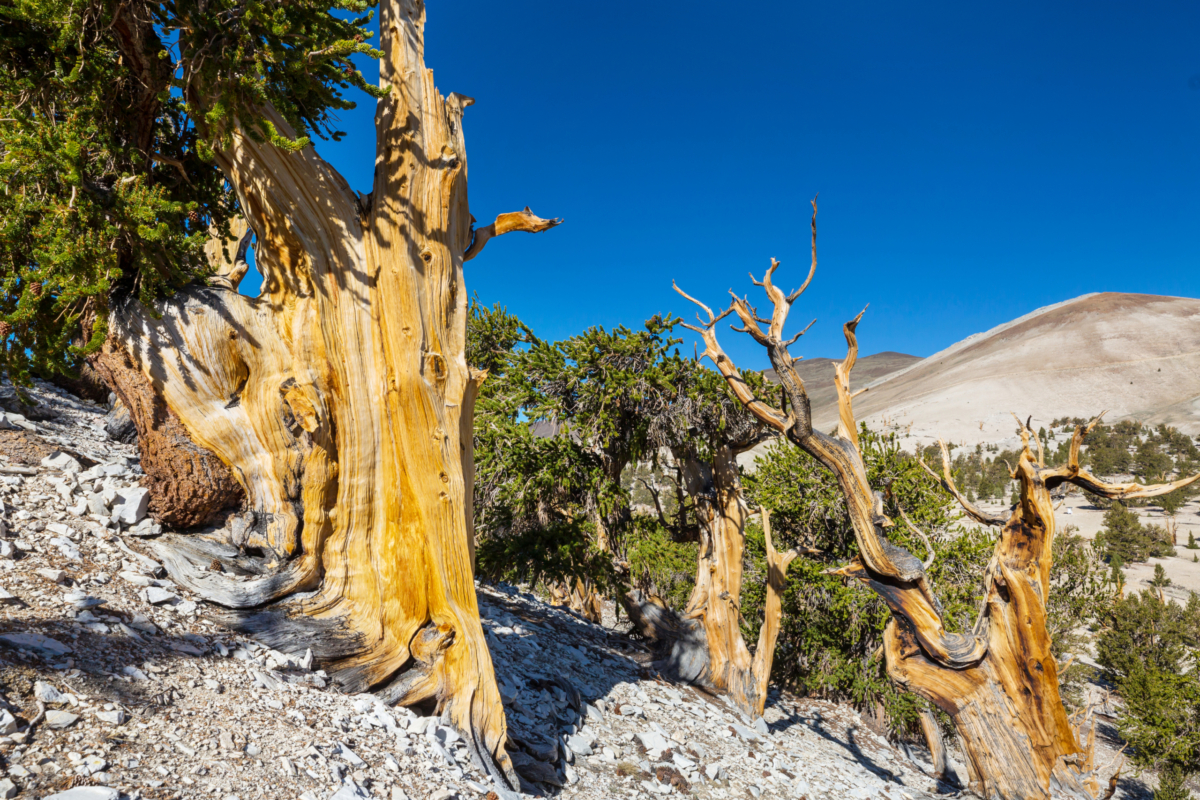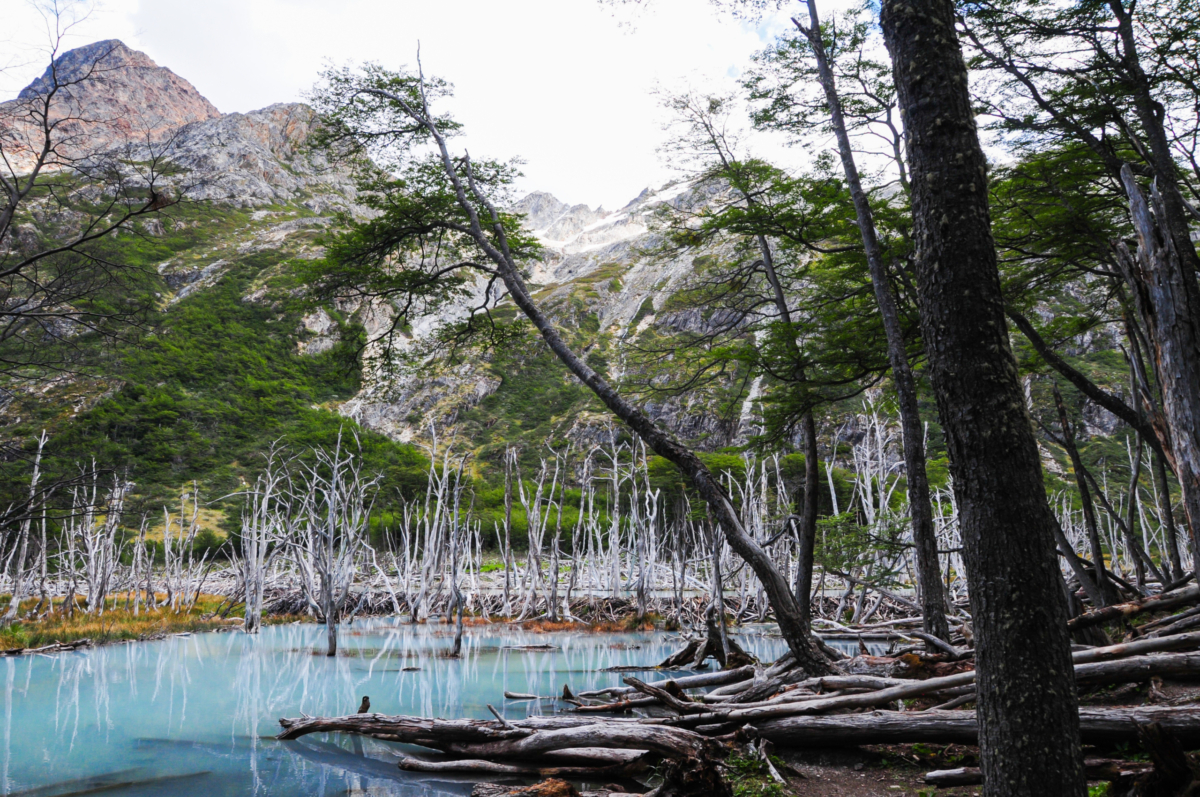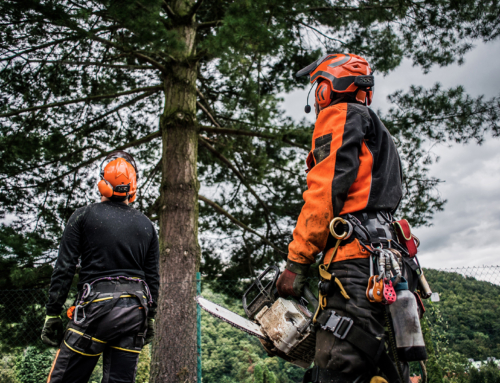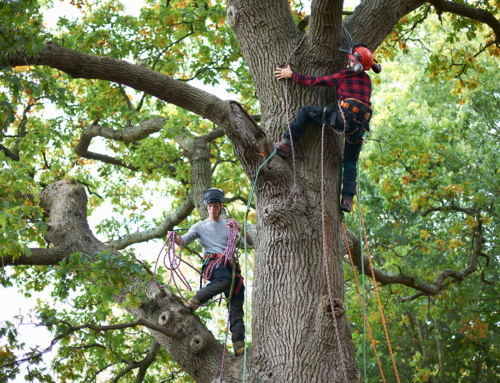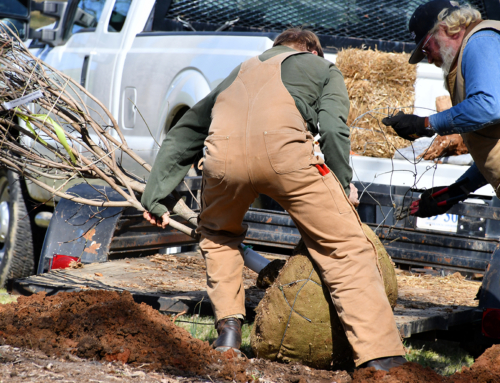Importance of Assessing the Condition of Trees at Mammoth Lakes, June Lake and Bishob CA Areas
The towering trees that grace the landscapes of Mammoth Lakes and June Lake are not merely decorative elements; they play a vital role in the delicate balance of the local ecosystem. These arboreal giants provide essential functions, such as regulating air quality, controlling soil erosion, and offering shade and shelter to a diverse array of wildlife. Their presence is a testament to the natural beauty that draws visitors from around the world to these picturesque regions.
However, the health and longevity of these trees are not a given. Like any living organism, they face a myriad of challenges, from pests and diseases to the effects of climate change and human activities. Assessing the condition of these trees is crucial to understanding their current state and implementing the necessary measures to ensure their continued well-being. By conducting comprehensive assessments, we can identify potential threats, address pressing issues, and develop strategies to safeguard these invaluable natural resources for generations to come.
The process of assessing the condition of trees is a multifaceted endeavor that requires the expertise of trained professionals. It involves a thorough examination of various factors, including the structural integrity of the trees, their overall health, and the presence of any potential hazards. This information is then used to develop tailored management plans that address the specific needs of each tree, ensuring their long-term survival and the preservation of the natural beauty that defines Mammoth Lakes and June Lake.
Overview of Mammoth Lakes , June Lake Bishob CA Areas
Nestled in the heart of the Sierra Nevada mountain range, Mammoth Lakes and June Lake are renowned for their breathtaking natural landscapes and abundant outdoor recreational opportunities. These picturesque regions are home to a diverse array of flora and fauna, including the towering trees that have become an integral part of the local ecosystem.
Mammoth Lakes, with its iconic ski resort and stunning alpine vistas, is a popular destination for both winter and summer enthusiasts. The area is characterized by a mix of coniferous and deciduous trees, including towering pines, majestic firs, and vibrant aspens, which add to the region’s natural splendor. These trees not only contribute to the scenic beauty but also play a crucial role in regulating the local climate, providing shade, and supporting a thriving wildlife community.
In contrast, June Lake, a picturesque community nestled in the Mono County region, offers a more serene and tranquil setting. The area is renowned for its pristine lakes, rugged mountain landscapes, and the verdant forests that surround them. The trees in June Lake, predominantly conifers such as Jeffrey pines and lodgepole pines, are a testament to the region’s resilience and adaptability, having withstood the test of time and the challenges posed by the elements.
Common Tree Species in Mammoth Lakes , June Lake and Bishob CA Areas
The trees that grace the landscapes of Mammoth Lakes and June Lake belong to a diverse array of species, each with its unique characteristics and ecological significance. In Mammoth Lakes, the most common tree species include the towering Jeffrey pine, the majestic white fir, and the vibrant quaking aspen. These trees, with their distinct features and adaptations, contribute to the area’s natural beauty and play a crucial role in maintaining the delicate balance of the local ecosystem.
The Jeffrey pine, a staple of the Sierra Nevada region, is known for its distinctive reddish-brown bark and its ability to thrive in the region’s harsh climate. These resilient trees, with their deep root systems and drought-resistant qualities, have become a symbol of the rugged natural beauty that defines Mammoth Lakes.
The white fir, with its soft, silvery-green needles and towering silhouette, is another prominent species in the Mammoth Lakes area. These stately trees provide valuable habitat for a variety of wildlife, offering shelter, nesting sites, and a source of food for the local fauna. Their presence adds to the region’s lush, forested landscapes and contributes to the overall ecological balance.
In contrast, the quaking aspen, with its distinctive white bark and shimmering leaves, adds a touch of vibrant color to the Mammoth Lakes landscape, particularly during the autumn months. These deciduous trees are not only aesthetically pleasing but also play a crucial role in stabilizing the soil and providing food and shelter for numerous species of birds and small mammals.
Similarly, the trees in June Lake, predominantly coniferous species, are an integral part of the local ecosystem. The towering Jeffrey pines and lodgepole pines, with their distinctive features and adaptations, have thrived in the region’s challenging climate, contributing to the area’s natural beauty and environmental balance.
Factors Affecting the Health of Trees at Mammoth Lakes, June Lake and Bishob CA Areas
The health and well-being of the trees in Mammoth Lakes and June Lake are influenced by a complex interplay of various factors, both natural and human-induced. Understanding these factors is crucial in assessing the current condition of the trees and developing effective strategies for their long-term preservation.
One of the primary factors affecting the trees in these regions is the ongoing challenge of climate change. The Sierra Nevada mountain range, where Mammoth Lakes and June Lake are situated, has experienced significant changes in temperature and precipitation patterns in recent years. These shifts can have profound impacts on the trees, altering their growth patterns, increasing their susceptibility to pests and diseases, and even leading to the gradual decline of certain species.
In addition to climate change, the trees in these areas face threats from various pests and pathogens. Insects such as the mountain pine beetle, which have seen a resurgence in recent years due to warmer temperatures, can wreak havoc on the local pine populations, compromising the health and structural integrity of the trees. Similarly, fungal diseases like root rot and canker can also contribute to the decline of trees, further exacerbating the challenges faced by these natural wonders.
Human activities, such as development, recreational use, and poor management practices, can also have a significant impact on the health of the trees in Mammoth Lakes and June Lake. The construction of roads, buildings, and other infrastructure can disrupt the delicate balance of the ecosystem, leading to soil compaction, root damage, and disruption of natural drainage patterns. Additionally, the heavy foot traffic and recreational activities in these areas can contribute to soil erosion and the trampling of vegetation, further stressing the trees and compromising their overall well-being.
Methods Used to Assess the Condition of Trees at Mammoth Lakes, June Lake and Bishob CA Areas
Assessing the condition of trees in Mammoth Lakes and June Lake requires a comprehensive and systematic approach that combines the expertise of trained professionals and the latest technological advancements. This process involves a multifaceted examination of various factors, including the structural integrity of the trees, their overall health, and the presence of any potential hazards.
One of the primary methods used in tree assessments is visual inspection, where trained arborists and horticulturists closely examine the trees for signs of distress, such as discolored or wilting leaves, damaged bark, or the presence of pests or diseases. This hands-on approach allows the experts to identify specific issues and develop targeted solutions to address the trees’ needs.
In addition to visual inspection, modern tree assessment techniques also involve the use of advanced technologies, such as tree-climbing equipment and specialized diagnostic tools. These tools can provide a more detailed and accurate evaluation of the trees’ internal structure, root systems, and overall health. For example, the use of sonic tomography can help detect the presence of internal decay or structural weaknesses, while soil analysis can reveal nutrient deficiencies or the presence of harmful pathogens.
Another important aspect of tree assessments is the evaluation of environmental factors that may be impacting the trees’ well-being. This includes analyzing factors such as soil composition, moisture levels, and exposure to sunlight and wind. By understanding the unique environmental conditions of the Mammoth Lakes and June Lake regions, experts can better determine the specific needs of the local tree populations and develop tailored management strategies to address their challenges.
Importance of Professional Tree Assessments at Mammoth Lakes, June Lake and Bishob CA Areas
Conducting professional tree assessments in Mammoth Lakes and June Lake is of paramount importance for the long-term health and preservation of these natural wonders. These assessments, carried out by trained arborists and horticulturists, provide invaluable insights into the current condition of the trees and the challenges they face, allowing for the development of targeted management strategies that address the specific needs of each tree.
One of the key benefits of professional tree assessments is the ability to identify potential hazards before they become a threat. By closely examining the structural integrity and overall health of the trees, experts can detect any signs of decay, instability, or potential for failure. This information is crucial in preventing the occurrence of dangerous situations, such as falling branches or uprooted trees, which could pose a risk to the safety of residents and visitors in Mammoth Lakes and June Lake.
Moreover, professional tree assessments play a vital role in the long-term management and preservation of the local tree populations. The data collected during these assessments can be used to develop comprehensive plans for tree maintenance, disease and pest control, and strategic replanting efforts. By addressing the specific needs of each tree, these management strategies can help ensure the continued vitality and longevity of the trees, preserving the natural beauty and ecological balance of Mammoth Lakes and June Lake for generations to come.
In addition to their practical applications, professional tree assessments also serve an important educational function. By sharing their findings and recommendations with the local community, arborists and horticulturists can raise awareness about the importance of tree conservation and inspire residents and visitors to take an active role in the stewardship of these natural resources. This collaborative approach can foster a deeper appreciation for the trees and the vital role they play in the local ecosystem, ultimately contributing to the long-term sustainability of Mammoth Lakes and June Lake.
Results and Findings of Previous Tree Assessments in Mammoth Lakes and June Lake
Over the years, various tree assessment studies have been conducted in Mammoth Lakes and June Lake, providing valuable insights into the current condition of the local tree populations and the challenges they face. These assessments, carried out by professional arborists and horticulturists, have shed light on the overall health of the trees, the presence of pests and diseases, and the impact of environmental factors on their well-being.
One recent assessment in Mammoth Lakes, for example, revealed a concerning trend of declining tree health, particularly among the region’s iconic Jeffrey pines. The study found that a significant number of these trees were suffering from the effects of drought, with many exhibiting signs of stress, such as discolored needles and dieback. Additionally, the assessment identified the presence of the mountain pine beetle, a destructive insect that has been ravaging pine populations across the Sierra Nevada range, as a significant threat to the local tree populations.
Similarly, a comprehensive tree assessment in June Lake highlighted the ongoing challenges faced by the area’s coniferous trees, particularly the lodgepole pines. The study found that these trees were grappling with the effects of climate change, with warmer temperatures and altered precipitation patterns contributing to an increase in the prevalence of fungal diseases, such as root rot and canker. The assessment also identified the need for targeted management strategies to address these issues and ensure the long-term viability of the June Lake tree populations.
These assessments have not only provided valuable data on the current state of the trees but have also informed the development of targeted management plans to address the identified challenges. By working closely with local authorities and community stakeholders, the experts involved in these assessments have been able to implement a range of interventions, including pest control measures, selective thinning, and strategic replanting efforts, to promote the health and resilience of the trees in Mammoth Lakes and June Lake.
Challenges and Issues Faced in Tree Assessments at Mammoth Lakes, June Lake and Bishob CA Areas
While professional tree assessments play a crucial role in the preservation and management of the trees in Mammoth Lakes and June Lake, the process is not without its challenges and complexities. From logistical hurdles to the ever-evolving nature of the local ecosystems, the experts tasked with evaluating the condition of these natural wonders must navigate a variety of obstacles to ensure the accuracy and effectiveness of their assessments.
One of the primary challenges faced in tree assessments is the sheer scale and diversity of the tree populations in these regions. With thousands of trees spanning vast and often rugged terrain, conducting comprehensive evaluations can be a time-consuming and resource-intensive endeavor. This is further complicated by the remote and inaccessible nature of certain areas, which can make it difficult for arborists and horticulturists to access and thoroughly examine the trees.
Another significant challenge is the dynamic nature of the local ecosystems, which can undergo rapid changes due to factors such as climate change, pest infestations, and human activities. As these environmental conditions evolve, the experts conducting the assessments must constantly adapt their methods and strategies to ensure that their findings accurately reflect the current state of the trees. This requires ongoing monitoring, data collection, and the incorporation of the latest scientific research and technological advancements.
Additionally, the task of effectively communicating the findings of these assessments to local authorities, community stakeholders, and the general public can also present its own set of challenges. Translating complex scientific data into actionable and easily understandable information is crucial for garnering support and buy-in for the implementation of necessary management strategies. Overcoming language barriers, cultural differences, and varying levels of environmental awareness can further complicate this aspect of the assessment process.
Despite these challenges, the experts tasked with evaluating the condition of trees in Mammoth Lakes and June Lake remain steadfast in their commitment to preserving these natural wonders. Through innovative approaches, collaborative efforts, and a deep understanding of the local ecosystems, they continue to work tirelessly to ensure the long-term health and vitality of the trees that are so integral to the character and identity of these cherished regions.
Recommendations for Maintaining and Improving Tree Health in the Area of Mammoth Lakes, June Lake and Bishob CA Areas
As the assessment of the existing condition of trees in Mammoth Lakes and June Lake has revealed, the challenges faced by these natural wonders are multifaceted and require a comprehensive, multi-pronged approach to address. To ensure the long-term health and preservation of the trees in these regions, a range of recommendations and strategies have been developed by the experts involved in the assessment process.
One of the primary recommendations is the implementation of proactive and targeted management practices, which can help mitigate the impact of pests, diseases, and environmental stressors on the trees. This may include the strategic application of pesticides and fungicides, the selective thinning of overcrowded stands, and the implementation of irrigation and soil management techniques to support the trees’ overall health and resilience.
Another crucial recommendation is the continued monitoring and assessment of the trees, using the latest technological advancements and scientific research. By regularly evaluating the condition of the trees, experts can identify emerging threats, track the effectiveness of management strategies, and adapt their approaches as needed to ensure the long-term viability of the local tree populations. This ongoing assessment process is essential for the preservation of the trees and the natural beauty they contribute to Mammoth Lakes and June Lake.
In addition to these management strategies, the experts have also emphasized the importance of community engagement and education in the preservation of the trees. By raising awareness about the significance of these natural resources and the challenges they face, local authorities and community stakeholders can work together to develop and implement conservation initiatives that engage residents and visitors alike. This collaborative approach can foster a sense of stewardship and ownership among the public, ultimately contributing to the long-term sustainability of the trees in Mammoth Lakes and June Lake.
Finally, the experts have recommended the exploration of innovative, nature-based solutions to address the impacts of climate change and other environmental stressors on the trees. This may include the strategic planting of drought-resistant and pest-resilient tree species, the restoration of degraded habitats, and the implementation of sustainable land management practices that prioritize the health and well-being of the local tree populations. By embracing these innovative approaches, the communities of Mammoth Lakes and June Lake can ensure the continued vitality and resilience of the trees that are so integral to their natural landscapes.
Conclusion
The trees that grace the landscapes of Mammoth Lakes and June Lake are not merely passive elements of the natural environment; they are living, breathing entities that play a vital role in the delicate balance of the local ecosystem. As we have explored in this comprehensive assessment, the condition of these trees is a reflection of the complex interplay of natural and human-induced factors, ranging from the effects of climate change to the impacts of human activities.
Through the tireless efforts of trained professionals, we have gained a deeper understanding of the challenges faced by the trees in these regions and the strategies that can be employed to ensure their long-term preservation. From the implementation of proactive management practices to the fostering of community engagement and the exploration of innovative, nature-based solutions, the experts involved in this assessment have outlined a comprehensive plan of action to safeguard the trees and the natural beauty they contribute to Mammoth Lakes and June Lake.
As we look to the future, it is clear that the preservation of these arboreal giants is not only a matter of ecological importance but also a testament to our collective responsibility as stewards of the natural world. By embracing the recommendations outlined in this assessment and continuing to prioritize the health and well-being of the trees, the communities of Mammoth Lakes and June Lake can ensure that these natural wonders continue to inspire and captivate visitors for generations to come. Together, we can work to protect and preserve the trees that are the very heart and soul of these cherished regions.
Skyline Tree Service is a locally owned and operated tree service company based out of the greater Mammoth Lakes, June Lake, and Bishop CA area. Please contact us for an appointment.
